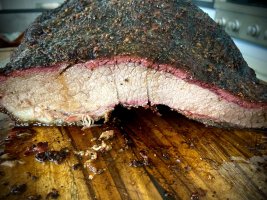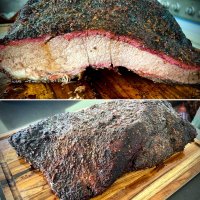MrBalloonHands
New member
Hello to all!
This is my first attempt at smoking a brisket on my Silverton 620. It's a 12.5# packer. I plan on using the recipe linked to below:
Texas-Style Smoked Beef Brisket by Doug Scheiding
My question is how important is it to spray during the initial phase after the first 3 hours? I have seen other methods of protecting against a dry brisket like leaving an open container of apple juice or marinade in the grill to evaporate or injecting at different times. Would these be a decent alternative to spraying with the apple juice?
My concern is the timing of the first phase. If I want to serve at 6pm and plan on an initial phase of 12 hours, a secondary phase of 4 hours and a 2 hour rest in the cooler that puts me at starting the initial phase at midnight and spraying apple juice starting at 3 am and doing so every 45 minutes until noon. That seems like way too much trouble and I haven't seen anyone mention doing so on the forums.
Thanks to everyone who helps this noob out! My guests (and myself) will be forever in your debt.
MBH
This is my first attempt at smoking a brisket on my Silverton 620. It's a 12.5# packer. I plan on using the recipe linked to below:
Texas-Style Smoked Beef Brisket by Doug Scheiding
My question is how important is it to spray during the initial phase after the first 3 hours? I have seen other methods of protecting against a dry brisket like leaving an open container of apple juice or marinade in the grill to evaporate or injecting at different times. Would these be a decent alternative to spraying with the apple juice?
My concern is the timing of the first phase. If I want to serve at 6pm and plan on an initial phase of 12 hours, a secondary phase of 4 hours and a 2 hour rest in the cooler that puts me at starting the initial phase at midnight and spraying apple juice starting at 3 am and doing so every 45 minutes until noon. That seems like way too much trouble and I haven't seen anyone mention doing so on the forums.
Thanks to everyone who helps this noob out! My guests (and myself) will be forever in your debt.
MBH









